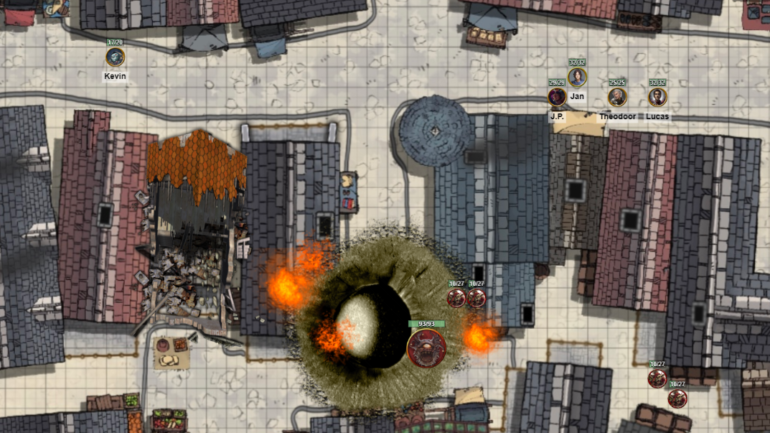The Baby Grinch: A Little Heart Too Small for Christmas?
It’s the holiday season again, which means that the world is gearing up for the same predictable frenzy: office parties, Christmas lights, endless amounts of mulled wine, and of course, Grinch memes. And while everyone’s getting cozy with their Christmas movies—whether it’s a re-watch of Home Alone or Love Actually—let’s take a moment to consider the real star of the season. No, not Santa, not Rudolph, and definitely not the over-hyped elf on the shelf. I’m talking about the Baby Grinch.
Now, before you roll your eyes and mutter something about the commercialization of Christmas ruining its magic (I see you, Scrooge), hear me out. The Baby Grinch isn’t just a cute little festive gimmick, like those plastic Santas that bobble their heads or the light-up snowmen that people are way too eager to place in their front yards. No, the Baby Grinch is something far more fascinating. A living, breathing paradox that somehow manages to be both adorable and a little sinister at the same time.
It’s no secret that The Grinch Who Stole Christmas—Dr. Seuss’s classic story about a furry green creature with a heart “two sizes too small”—has been an enduring part of holiday culture for decades. It’s the kind of story that kids love and adults can’t help but watch at least once every December, even if they pretend they’re too “grown-up” for it. And while the Grinch is forever associated with his epic heist of Christmas (seriously, how did no one notice that his sack of stolen toys was about the size of a small mountain?), it’s the character’s heartwarming redemption arc that really makes the story timeless.
But here’s the thing: as much as we love the Grinch, we’ve got to admit it’s his softer side that captivates us the most. The transformation from bitter outsider to someone who’s genuinely moved by the joy of Christmas—this is the part that makes us all feel a little bit better about ourselves, even when we’re secretly judging our neighbors for putting up Christmas lights in November.
And so, the Baby Grinch—a fuzzy little version of the most iconic holiday villain—enters the scene. But what does it all mean? Is it just another cash grab, designed to sell more Christmas-themed onesies? Or is there something deeper to this tiny, misunderstood creature that we can all learn from?
The Grinch Baby Outfit: A Little Heartwarming Irony
Let’s start with the baby Grinch outfit, because, well, we all know you’re probably imagining one by now. It’s the holiday equivalent of those cheesy “onesies for adults” that seem to show up every time someone decides to throw a party that’s “just a little bit different.” The baby Grinch outfit is the perfect mix of cute and sarcastic—a way to say, “Yes, I love Christmas, but I’m too cool for all the fluffy reindeer and snowflakes.”
But, if you stop and think about it for a second, this tiny version of the Grinch in all his little green glory is both hilarious and oddly heartwarming. You’ve got this baby—completely innocent, completely unaware of the havoc his older, more evil self will cause—but somehow still an incarnation of that classic Grinch mischief. It’s almost like the outfit is saying, “Look, this little one hasn’t yet had his heart shrunk by bitterness or spite. He’s still got the potential to change, to learn to love, to be part of something greater than himself.” It’s the kind of thing that makes you wonder about the broader message of the Grinch story.
The Baby Grinch is a symbol of hope. It’s a reminder that even the most “miserable” of people (or Grinches, in this case) can find their way back to joy and connection. After all, this little green fellow is a work in progress, and so are we. He may start out with a heart that’s “too small,” but by the end of the story, it grows three sizes, just like any of us when we finally get the holiday spirit, let go of our cynicism, and take part in something bigger than ourselves.
But the Baby Grinch is more than just an adorable character in a ridiculous outfit. No, it’s a clever commentary on how we view “misunderstood” individuals in society, whether they be children, adults, or those who wear their frustration with the world a little too obviously. The Baby Grinch isn’t fully formed yet—he hasn’t yet experienced the resentment that his adult self will eventually hold against Christmas. He’s still a work in progress, and for some reason, we find that more relatable than ever.
The Grinch Baby Meme: Is This Really Who We’ve Become?
Let’s get back to those Baby Grinch memes for a moment. Yes, they’re funny. They’re also deeply emblematic of how we, as a society, like to poke fun at things. We love juxtaposing something as pure as a baby with something as grim and cynical as the Grinch. And, sure, there’s an undeniable charm in seeing a tiny version of a character who’s notorious for despising Christmas decked out in full holiday gear. But, beneath the laughter, there’s a deeper issue here—one that no one seems to talk about.
As we dress our babies in Baby Grinch outfits and laugh at the irony, we’re also engaging in the age-old tradition of labeling others. The Baby Grinch is the perfect metaphor for society’s tendency to reduce people to their most basic, easily digestible traits. You know the ones I’m talking about: the grumpy old man who never says “hello” at the mailbox, the angsty teen who rolls their eyes at everything, the corporate employee who just can’t stand office parties. It’s so much easier to label these people as “Grinches,” isn’t it? They’re cynical, they’re bitter, they’re “bad guys” who don’t love Christmas. But what if, just like the Baby Grinch, they’re not so bad after all? What if they’ve simply been misunderstood?
The Baby Grinch reminds us that not all who seem jaded are beyond redemption. Maybe, just maybe, all they need is a little understanding—or a kind gesture, like, say, a heartfelt Christmas card. But instead, we tend to avoid them, treating them as outsiders or misfits.
The Grinch Baby: A Lesson in Redemption
As we dress our kids in adorable Baby Grinch costumes and joke about how “cute” it is for someone so tiny to already be so “grumpy,” let’s remember the ultimate lesson of the Grinch story. It’s a tale of redemption, of second chances, and of the power of love and community. After all, if the Grinch can go from being a Christmas-hating curmudgeon to a beloved member of Whoville, maybe we can all do a little better when it comes to giving people the benefit of the doubt.
So, the next time you see a Baby Grinch on your social media feed—whether it’s in an outfit, a meme, or even just a fleeting thought—take a moment to think about what it really represents. Is it just a funny costume? Or is it a reminder that we all have the potential to change, to grow, and to be better than the person we were yesterday? Maybe that Baby Grinch isn’t so bad after all. Maybe, like all of us, he’s just waiting for his heart to grow three sizes.
And if you ever need a little nudge to help you believe in that transformation, just look at that adorable Baby Grinch—and remember that even the smallest heart can learn to love Christmas.


